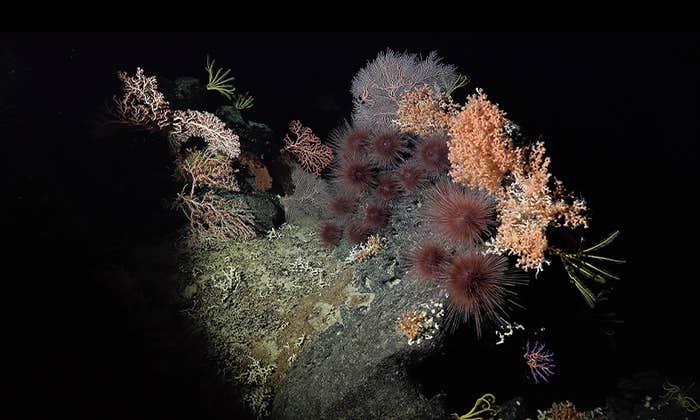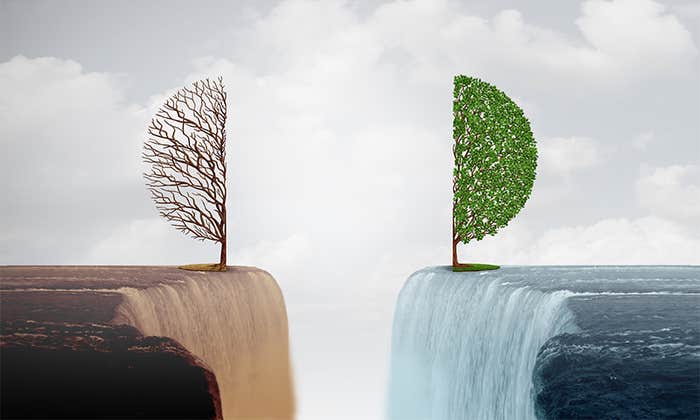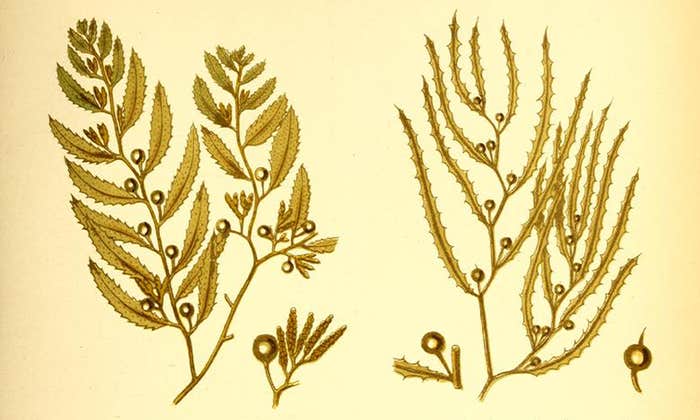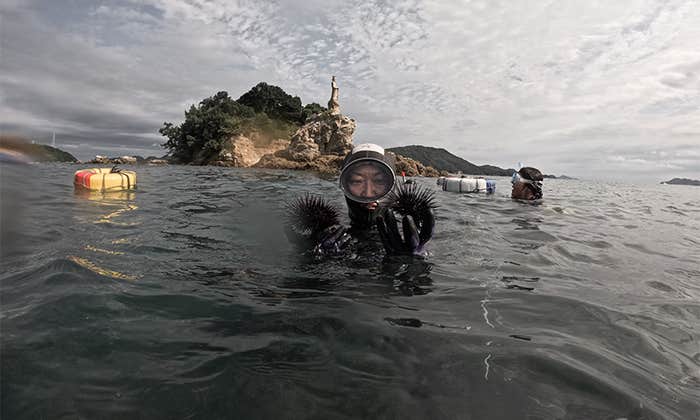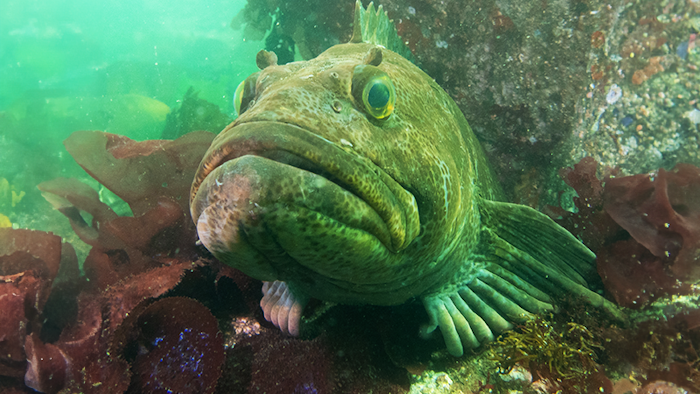First come the sleeper sharks and the rattails and the hagfish, scruffily named scavengers of the sea, along with amphipods and crabs who pluck delicately at bits of flesh. Tiny worms, mollusks, and crustaceans arrive in their hordes of tens of thousands, to sift through the seafloor sediment for tasty morsels. Then forests of luridly colored tube worms capable of secreting bone-dissolving acid spring up; there are snails grazing on bone dust, and mussels hoarding chemosynthetic bacteria in their bodies, scattered through the sediment like coins. Finally, anemones and filter-feeding tube worms wave like flags from the ramparts of ribcage and vertebra. All this deep-sea life sustained by the death of one whale.
Whale falls—the ecosystems that coalesce around cetacean carcasses when they sink to the seafloor—have become an object of fascination, even veneration, among scientists and the general public alike: the frisson of a memento mori intersecting with our adoration of and identification with the largest animals Earth has ever known. “The idea of life after death, I think, is something that’s reassuring: that we’re all part of something greater,” says Craig Smith, a retired oceanographer and one of the scientists who in 1987 discovered the first known whale fall, a 20-meter-long blue or fin whale resting in peace more than 4,000 feet deep off the coast of southern California.
Whale-fall ecosystems reflect the ocean not as it is today, but as it was in the past.
About 10 dozen whale falls have been documented since then, usually encountered serendipitously during remote-operated vehicle dives. They are among the most biodiverse habitats in the deep sea. Nearly 500 species have been found on whale falls, and at least 100 of them are thought to be whale-fall specialists, meaning they have only ever been seen, or seen in significant numbers, on the sunken carcasses of whales.
And yet: We may never know the full wonder of whale falls.
Work by Smith and other scientists suggests that as industrial whaling removed whales from the ocean, some never-to-be-known number of whale-fall specialists disappeared along with them. More such species may now be hanging on, destined to wink out in coming decades, though some may yet be saved if the cetaceans upon whom they depend are protected. Extinctions of whale-fall specialists haven’t been a big part of the public conversation around whale falls—but perhaps they should be. “I think they’re a really good tale for us to digest, and think about and remember how we have behaved in the past,” says Diva Amon, a marine biologist at University of California, Santa Barbara.
All sorts of life forms fall, in death, to the seafloor. But whales—especially great whales, meaning the 13 largest whale species, including sperm, right, blue, gray, and humpback whales—are special. A 40-ton gray whale carcass represents roughly 2,000 years’ worth of the carbon that would otherwise fall—mostly in the form of small detritus particles that are known as marine snow and are a vital food for many deep-sea creatures—into its footprint on the seabed. “It’s an enormous amount of nutrients and energy coming in at a single pulse” in a generally nutrient-poor environment, says Joe Roman, a conservation biologist at the University of Vermont.
The way nutrients are packaged in the bodies of great whales is also unique. Their enormous bones are full of oil, an adaptation that, in life, aids buoyancy and helps the animals withstand the pressure of deep dives. The bones of an adult whale may contain between 2.2 and 15.4 tons of lipids locked up inside the bone matrix, a resource that is hard to access and can take decades to work through—thus making whale falls not only a food source for other species but also a place for them to live.
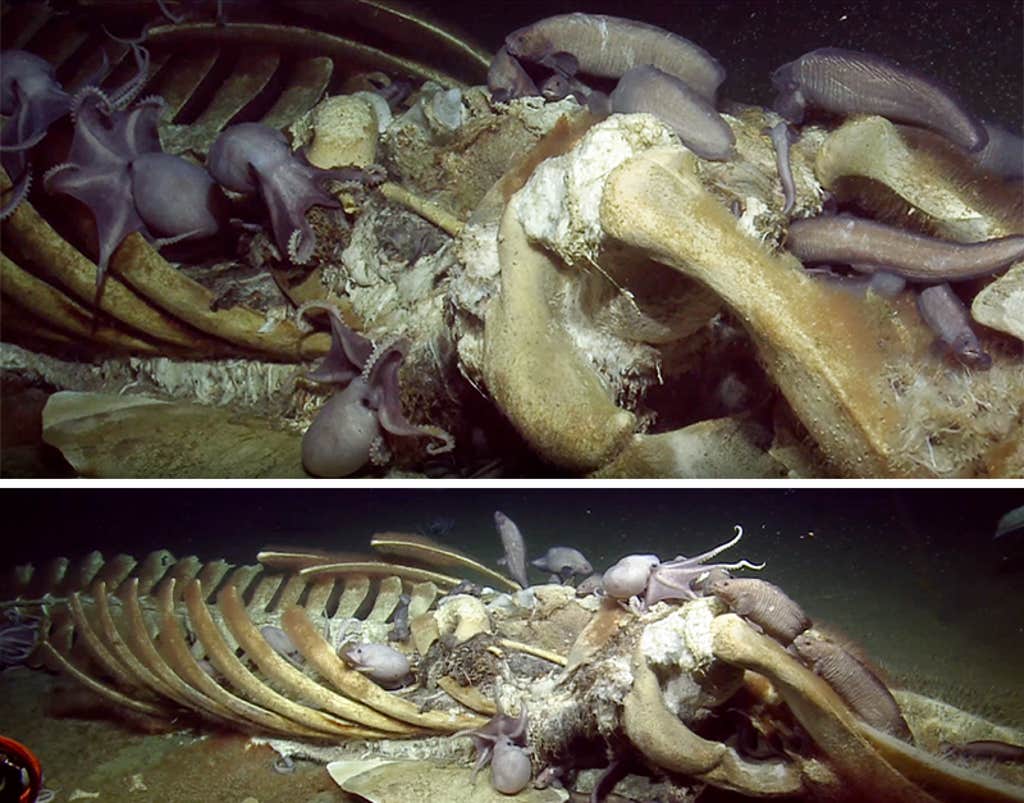
In the fossil record, radiations of taxa that we now know as whale-fall specialists accompany the evolution of cetaceans and especially the appearance of large whales with lipid-rich skeletons. When the great whales evolved roughly 30 million years ago, they might have filled the oceans not just with their songs but with new forms of life.
All of that changed in the past several centuries. Commercial whaling reduced great whale populations by at least two-thirds and perhaps as much as 90 percent. At first, this process must have led to a surge of whale falls as whalers stripped carcasses of blubber, baleen, spermaceti, and anything else that could be sold, then dumped the remainder at sea. But this would have occurred in different locations than natural whale falls—radiating out from whalers’ home ports, rather than along traditional whale migration routes and in feeding and calving grounds. Then, following the introduction in the 20th century of factory whaling ships that processed and rendered entire carcasses, their bodies went absent altogether.
Less habitat supports fewer species, a well-known ecological principle known as the species-area relationship. “Whale fall habitat abundance has been reduced,” Smith says. “And, of course, habitat loss is the main driver of species extinctions by human activities.” By the time we encountered whale-fall ecosystems, our decimation of these habitats had been underway for several centuries. Although no direct evidence of whale-fall specialist extinctions has yet been found, that might be because the baseline shifted before anyone observed it.
Whale falls are among the most biodiverse habitats in the deep sea.
But scientists have some idea of where such extinctions likely occurred. Industrial whaling first targeted whales in the North Atlantic, and 150 years later the overall abundance of large whales remains at less than one-quarter of pre-whaling levels. This degree of habitat loss would be expected to drive extinct between 30 and 50 percent of whale-fall specialists in the region, which according to scientists including Smith and Amon were probably the earliest human-caused extinctions in the deep ocean.
Guesses can be made about what kinds of species were likely lost. The so-called mobile scavengers, the sharks and octopuses and so on who arrive when a whale first falls, can subsist on many kinds of flesh and roam considerable distances to find food; so while their populations might have shifted or diminished, these species likely wouldn’t have vanished altogether. Instead, the losses probably would have occurred mostly in the later stages of whale-fall succession.
The most vulnerable animals would have been strictly dependent on whale carcasses: creatures like bone dust-eating snails who are immobile as adults and therefore unable to seek new habitat after a whale fall is depleted, and only able to disperse their larvae over relatively short distances. The increasingly large voids between whale falls would have stranded them.
They would also have been among the less common whale-fall species. According to a computational model of whale-fall dynamics developed by Smith, Roman, and mathematician J.B. Nation, the survival of whale-fall species depends on both the number of whale falls and, to an even greater degree, the size of the whale. They calculated that a species would have needed to be present on about 90 percent of deep-sea whale carcasses prior to industrial whaling in order to persist today; with so few whales now falling, and with whales smaller than they once were, due to hunting pressure, anything less than near-ubiquity would be a recipe for isolation and eventually extinction.
What could a whale’s body conjure that we will never know?
Whale falls offer a different way of understanding the dynamics of extinction, argues Michelle Bastian, an environmental historian at the University of Edinburgh. Scientists tell us that many species vanish without us even noticing, a fact that can quickly lose its emotional impact in abstraction. Contemplating the loss of whale-fall species lends a measure of concreteness to these unknowable losses. “It’s not a shrugging-your-shoulders kind of unknowing,” she says. “I know what caused the unknown. I know what kinds of lives the unknowns probably lived.”
Existing whale-fall species might offer some hints about what those lost species might have been like. One of the most iconic species of these ecosystems is Osedax rubiplumis, a species of tube worm with no mouth or gut who bores holes in whale bones and digests their lipids with the help of symbiotic bacteria who live in their root-like lower appendages. Robert Vrijenhoek, an evolutionary biologist now retired from the Monterey Bay Aquarium Research Institute, recalls that the worms looked “like a red shag carpet” when he first spotted them in 2002 covering the bones of a gray whale at the bottom of Monterey Bay, California.
The red color of O. rubiplumis comes from an iron-containing pigment similar to hemoglobin. What if there were once a lineage of bone-eating worms whose blood, like that of octopuses, used copper rather than iron to transport oxygen, and formed bright blue blankets on whale skeletons, like fields of bluebells with a years-long bloom?
The human mind conjures these things. But what could a whale’s body conjure that we will never know?
Depending on a whale’s size, the depth where they come to rest, and conditions like temperature, oxygen availability, and sedimentation rates, whale-fall ecosystems can persist for a long time. A whale’s soft tissues can sustain mobile scavengers like sharks and hagfish for a decade; the hard tissues can support the community that includes bone-eating worms for up to 80 years. In some circumstances, the lifespan of a whale fall can be even longer than the lifespan of a whale.
This means that many whale-fall ecosystems reflect the ocean not as it is today, but as it was in the past. Whale falls are “a bit like the light from stars” that takes many years to reach Earth, Bastian says.
In some parts of the ocean, there could still be active whale falls from a time before industrial whaling. But this time lag also creates what scientists call an extinction debt: Once these current whale falls are depleted, there will be no new home near enough for the next generation of whale-fall organisms to go.
The best place to glimpse this fading light of biological stars might be the bottom of the world. The Southern Ocean has been home to large whales for an especially long stretch of evolutionary time, leading scientists to expect that whale-fall ecosystems there should be exceptionally species-rich. Whaling in the Southern Ocean was particularly intense but also relatively recent, peaking between 1920 and 1960.
An urgent place to look for whale falls, then, might be in the vicinity of old whaling stations in this region. “We could probably discover new species,” Roman says. “Every year we’re losing whatever information that we could have had from that area.”
Can those extinction debts be canceled? Because whales grow and reproduce slowly, there can also be a decades-long time lag between the institution of protections for whales and their recovery in size and abundance. In the Southern Ocean, whalers slaughtered so many of the largest whales that their populations are likely to remain diminished for more than a century—plenty of time for many whale-fall species to complete their slide into oblivion.
Elsewhere, however, there is more hope. In the North Pacific, whaling pressures were relatively recent and less intense, and the numbers of some whales have substantially rebounded. The recoveries of gray and humpback whales are widely hailed as conservation successes; both species have even been removed from the United States’ endangered species list. But these whales need continued protection—from ship strikes, fishing gear entanglement, ocean noise, pollution, and the effects of climate change—so that they might remain plentiful, grow old and enormous, and finally become a source of new life at the bottom of the sea. ![]()
Lead image: NOAA





















